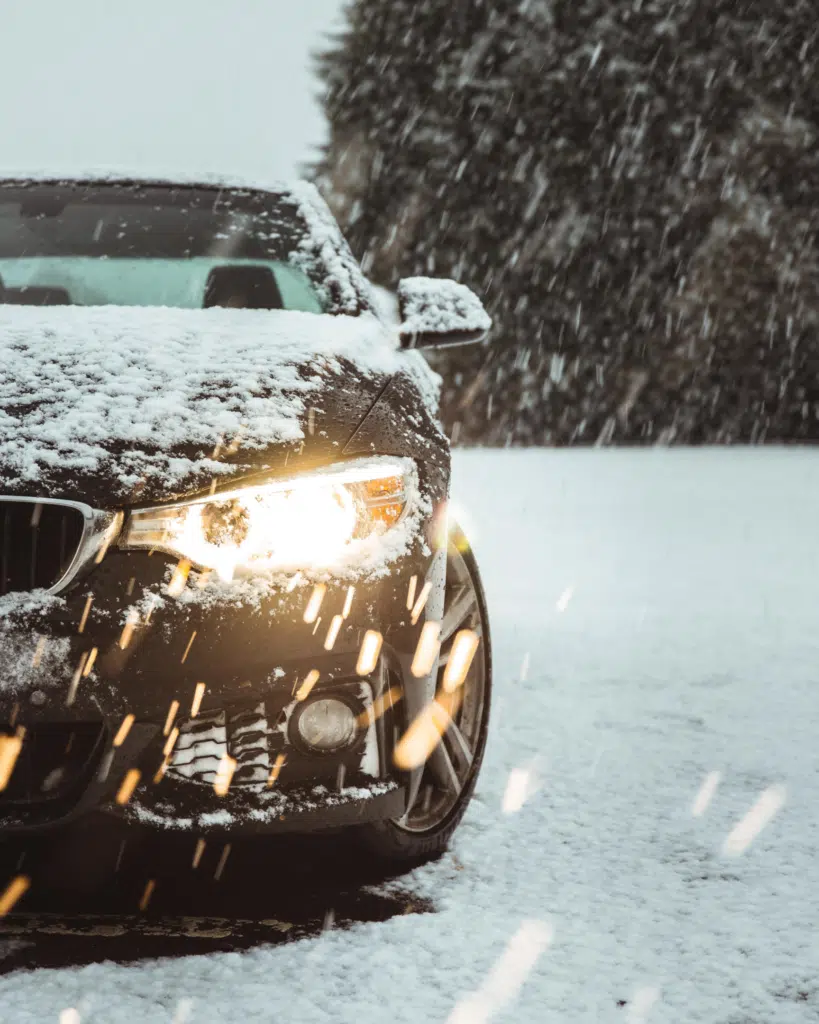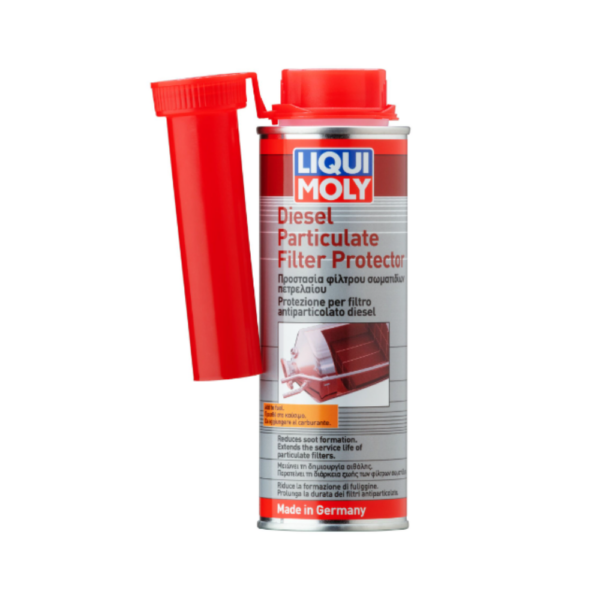It’s a freezing winter morning, and you’re already running late for work. You rush to your car, turn the key, and…nothing happens. We’ve all been there, haven’t we? A “car won’t start in the cold” situation can wreak havoc on our vehicles, causing a myriad of issues – from dead batteries to frozen fuel lines. This blog post will guide you through the most common cold weather car problems and provide practical solutions to keep your car running smoothly during those frosty months.
Key Takeaways
Cold weather can affect car batteries and reduce engine performance. Understanding how to maintain battery health in cold temperatures is essential.
Regularly inspect and clean the battery terminals, select suitable engine oil, use fuel additives specifically designed for cold weather, and take preventive measures like using diesel antigel additives from LIQUI MOLY to prepare your vehicle for winter.
Troubleshoot starter motor problems by inspecting connections/wires or replacing worn components such as the starter relay or ignition switch.
Cold Weather and Your Car Battery

When the temperature drops, car batteries are often the first to suffer, potentially leaving you with a dead battery. The chilly conditions can cause a significant decline in battery power, leaving you with a vehicle that simply won’t start.
We will next look at the impact of cold weather on your car battery and share some effective strategies to keep your battery healthy in freezing temperatures.
-
LIQUI MOLY Ceratec£20.40
-
Premium Oil Change Set£37.23
-
LIQUI MOLY Oil Sludge Flush£16.83
-
LIQUI MOLY Octane Booster£8.29
-
LIQUI MOLY Super Diesel Additive£7.17
-
LIQUI MOLY Diesel Particulate Filter Protector£8.10
-
LIQUI MOLY Radiator Stop Leak£6.20
-
LIQUI MOLY Fuel Injection Cleaner£10.02
The Impact of Cold on Battery Life
Cold temperatures can have a detrimental effect on your car battery, turning it into a cold car. As the temperature drops, the chemical reactions within the battery slow down, reducing the electrical current produced. This means that there is less power available to start your engine, making it more difficult to get your car going on a frosty morning.
A vital step in addressing this problem is ensuring your battery remains fully charged throughout the cold weather. To charge the unit, you can take your car for longer drives. Alternatively, you can manually charge it with a battery charger. Parking your car in a heated garage can also help maintain the battery’s performance during cold weather.
Tips for Maintaining a Healthy Battery in Cold Weather
Maintaining a strong battery during winter is pivotal in preventing unforeseen breakdowns. One of the most effective ways to maintain your battery’s health is to regularly inspect it, ensuring that the terminals are clean and properly connected. Inadequate connections can impede the current from circulating correctly, causing your battery to lose power.
If you notice any signs of corrosion on your battery terminals, it’s time to give them a thorough cleaning. Using a toothbrush and a strong mixture of baking soda and water, gently scrub away any crusty substance on the terminals. Corrosion creates electrical resistance, diminishing the power output of the battery. Regular inspections and cleaning of the terminals will help prevent this issue.
Another tip for maintaining a healthy battery in cold weather is to avoid switching on multiple electrical components simultaneously after starting your car. This could consume the car’s available power before the vehicle is in motion, leading to a drained battery. Instead, give your car a moment to warm up before turning on the headlights, heater, or other electrical devices.
Engine Oil Challenges in Cold Temperatures
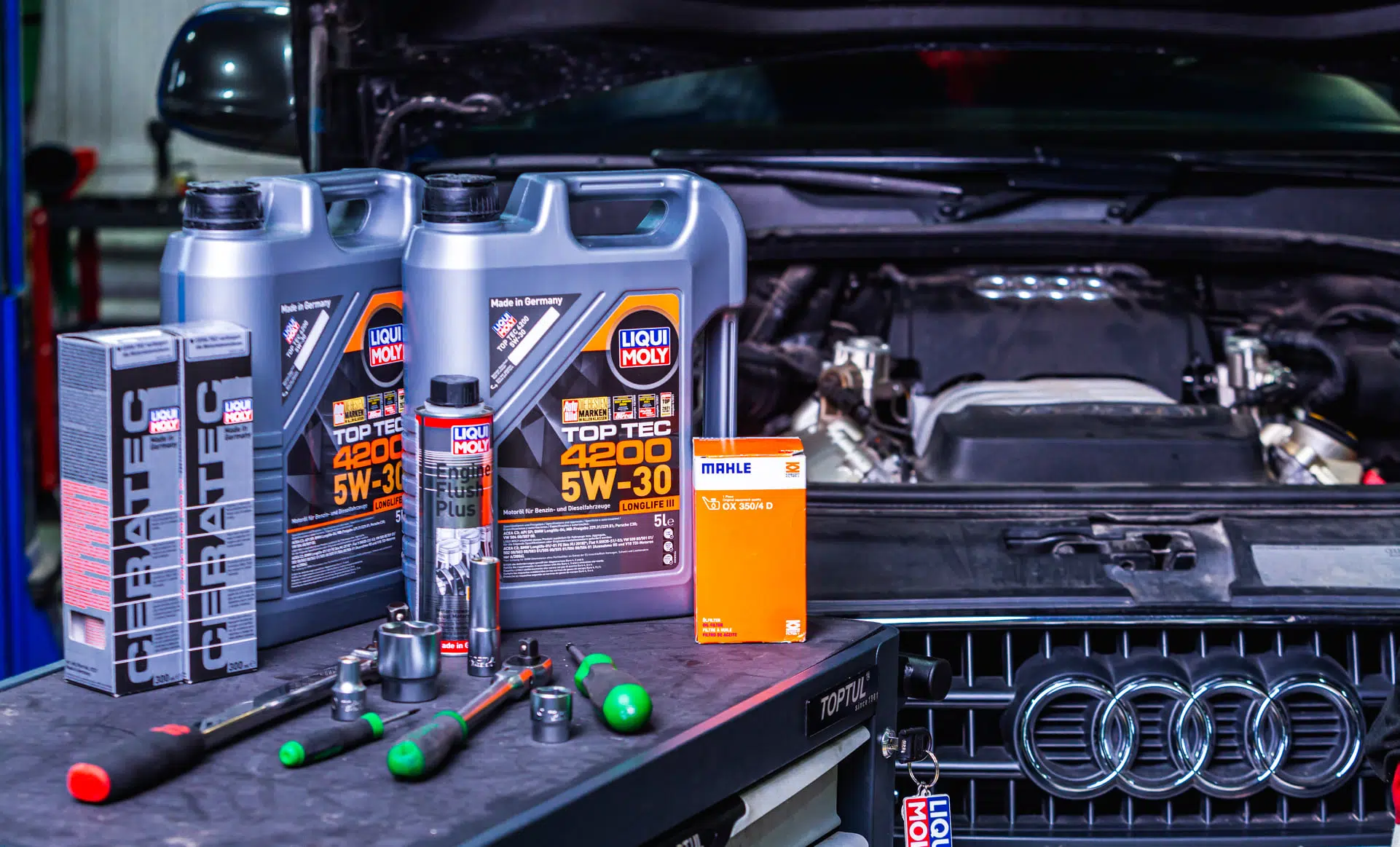
In addition to battery issues, cold weather can also cause problems with your car’s engine oil. As temperatures drop, the oil becomes more viscous, making it harder for the engine to turn over and start.
Next, we will examine the significance of selecting suitable engine oil for cold weather and discuss maintaining appropriate oil levels for optimal engine performance.
Get help for your car from our AI Car Expert!
Choosing the Right Oil
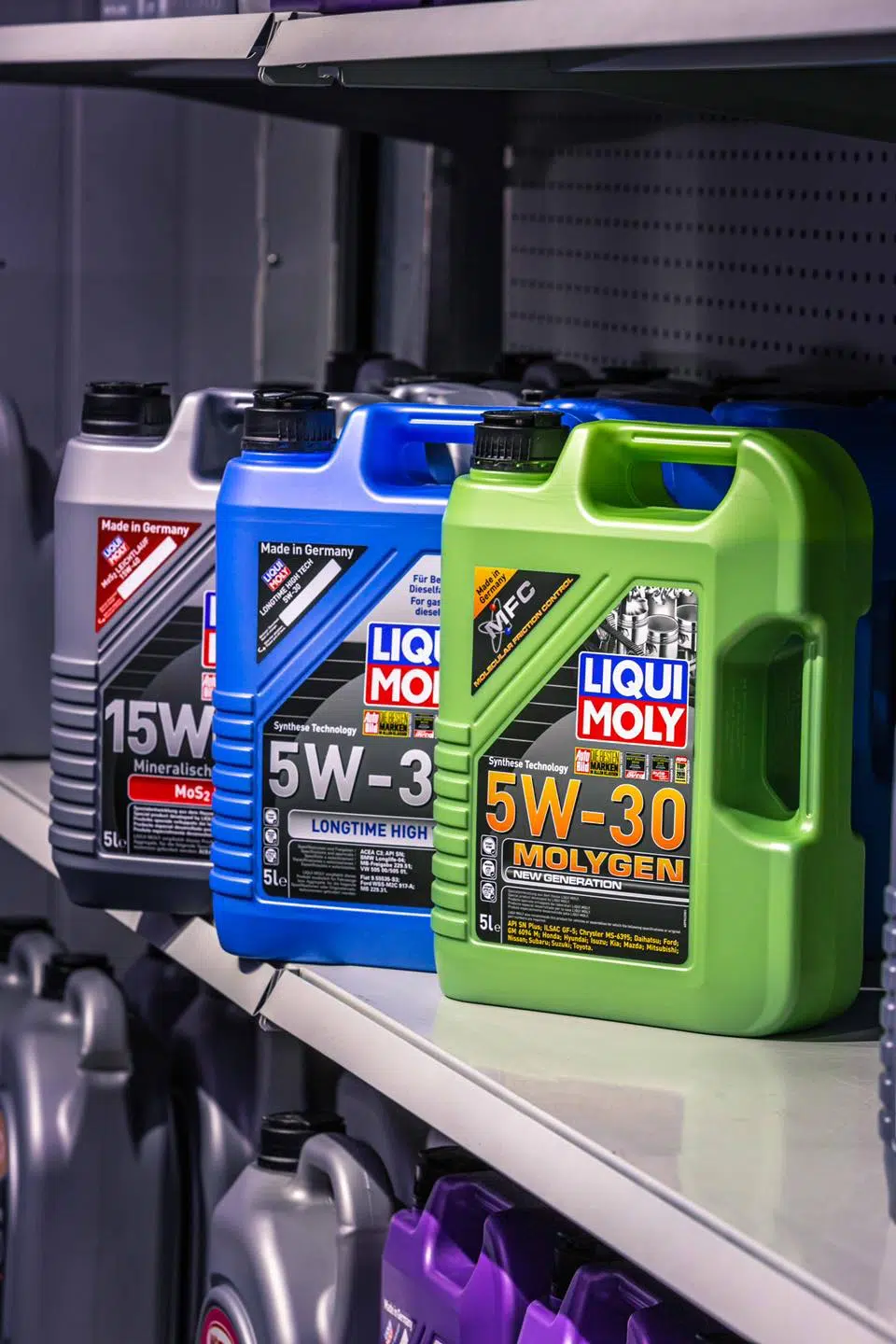
Choosing the appropriate oil type and viscosity is key to ensuring your engine operates smoothly in cold conditions. The right oil ensures that it can flow freely to all essential engine components, providing adequate lubrication and reducing wear and tear. To identify the recommended engine oil for your vehicle, consult your owner’s manual or use an online oil finder tool like the Redex oil finder.
In extreme winter conditions, it’s recommended to switch to full synthetic motor oil with improved cold-weather properties. Synthetic oil has better flow characteristics at low temperatures, helping to prevent the oil from thickening and ensuring your engine receives the lubrication it needs to function properly.
Adding LIQUI MOLY Ceratec to minimize friction resistance during cold start before engine oil is pumped in motor
One solution to tackle engine oil challenges in cold temperatures is the use of LIQUI MOLY Ceratec. This product is designed to address the issues of a cold engine by:
Reducing friction resistance during cold starts before engine oil is circulated into the motor
Minimizing friction between engine parts
Allowing the engine oil to flow more easily through the engine block
Reducing the energy required for starting
By using LIQUI MOLY Ceratec, you can improve the performance of your engine in cold temperatures.
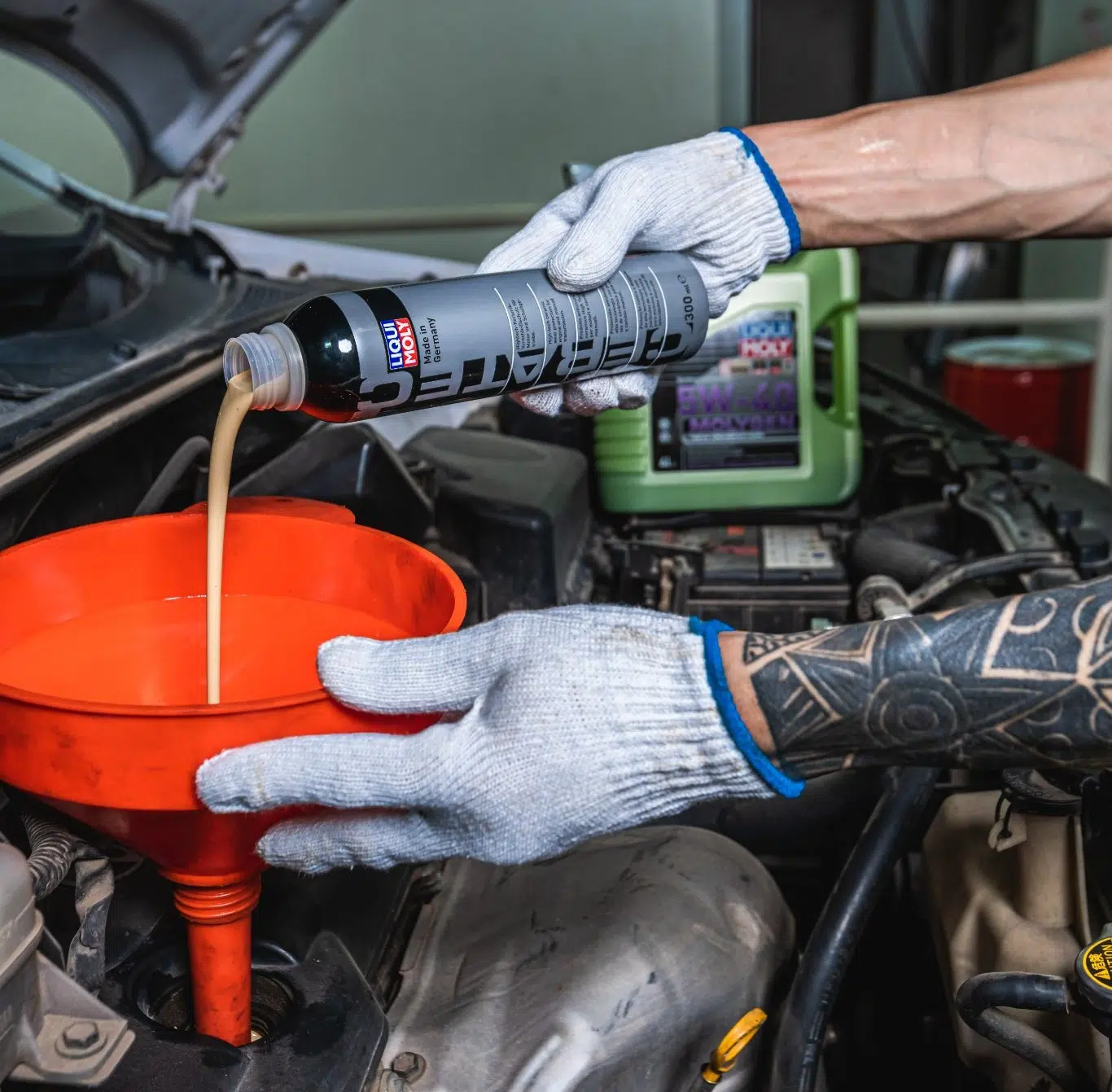
Utilizing the correct oil and considering additives like LIQUI MOLY Ceratec can help mitigate the impacts of cold temperatures on engine oil. This can result in decreased friction resistance during cold starts and prevent corrosion of engine components caused by the increased acidity of the oil in cold weather.
Regular Oil Changes
Adhering to a regular oil change schedule is key to achieving optimal engine performance in chilly conditions. As motor oil breaks down and mixes with contaminants over time, it becomes thicker and more challenging for the engine to circulate. This, in turn, can lead to more difficult engine starts and decreased fuel efficiency.
To avoid these issues, it’s crucial to adhere to your vehicle manufacturer’s recommended intervals for oil changes. Regularly replacing your engine oil will ensure that your engine receives the proper lubrication it needs to function smoothly, even in the coldest weather conditions.
Fuel System Issues in Freezing Conditions
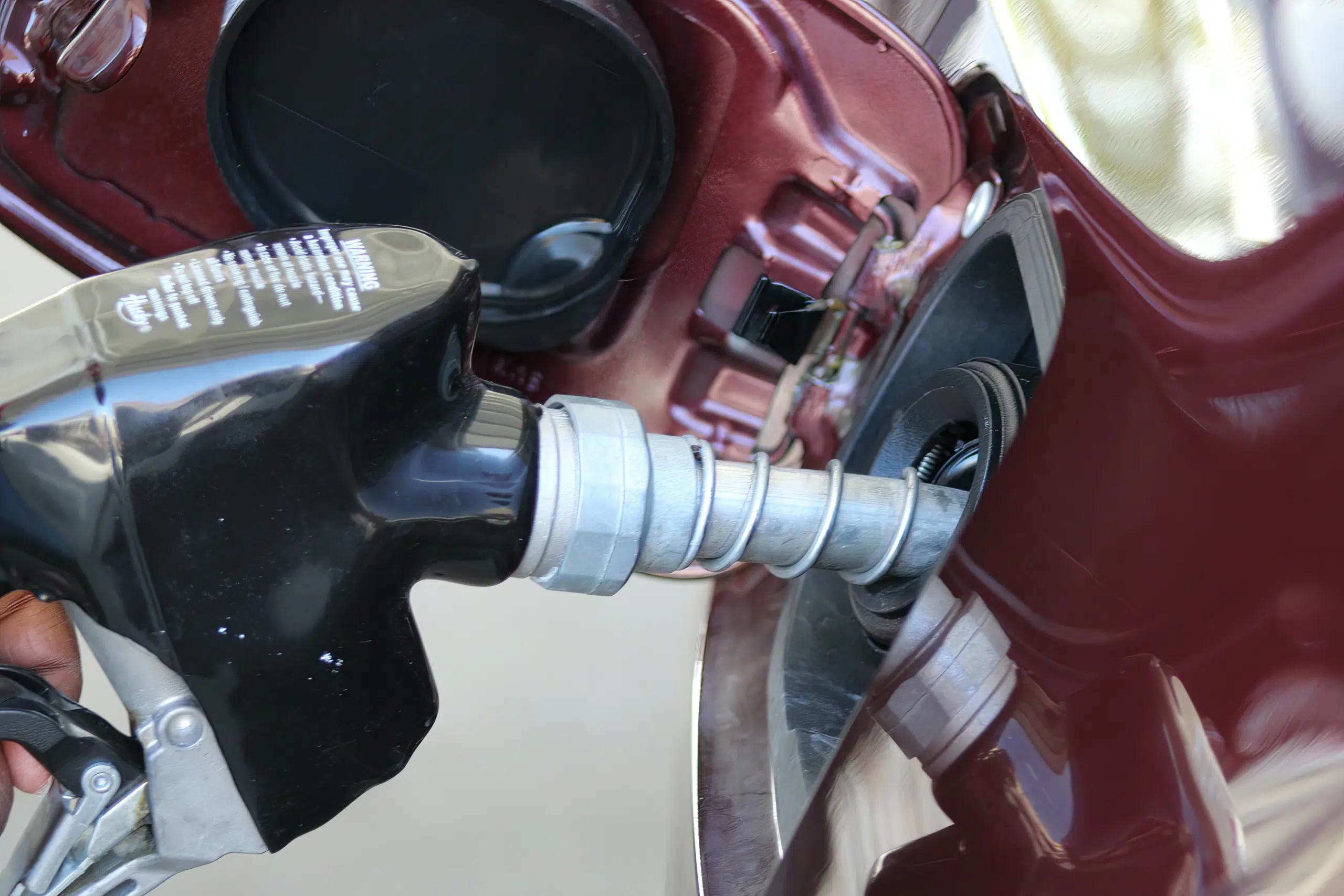
Cold weather doesn’t just affect your car’s battery and engine oil – it can also cause problems in your fuel system. Frozen fuel lines and fuel pump issues are common in very cold temperatures, making it difficult to start your car and keep it running smoothly.
We will next address these fuel system issues and propose preventive measures and solutions.
Preventing Frozen Fuel Lines
Frozen fuel lines can leave your car stranded on a cold winter day. Preventing this issue requires implementing a few preventive steps. One effective method to avoid frozen fuel lines is to keep your gas tank full. A full tank reduces the space where moisture can condense and freeze, causing blockages in your fuel lines.
Another way to prevent fuel lines from freezing is to use fuel additives specifically designed for cold weather. These additives can help lower the freezing point of the fuel in your tank, ensuring that it remains liquid even in very low temperatures.
By following these tips, you can greatly reduce the risk of frozen fuel lines and keep your car running smoothly in cold weather.
Troubleshooting Fuel Pump Problems
Fuel pump issues in cold weather can lead to a car that won’t start or stalls while driving. To spot and rectify fuel pump problems, one must check the fuel pressure in the vehicle. Checking the amount of pressure pushing fuel through the lines will help you determine if your fuel pump is functioning correctly.
If you suspect a fuel pump issue, it’s important to address it promptly to prevent further damage to your vehicle. Some common causes of fuel pump failure in freezing conditions include:
Low gas levels
Water freezing and blocking fuel supply
Rust and corrosion due to moisture
Impurities in gasoline freezing and creating issues.
Taking preventative measures, such as using diesel antigel additives from LIQUI MOLY, can help avoid these problems and keep your fuel system functioning efficiently.
How to use diesel antigel additives from LIQUI MOLY
Liquimoly diesel antigel additives are designed to prevent diesel fuel from gelling in low temperatures, ensuring optimal engine performance in cold weather. These additives work by inhibiting the formation of wax crystals in the diesel fuel, which can clog fuel filters and lead to poor engine performance or even engine failure.
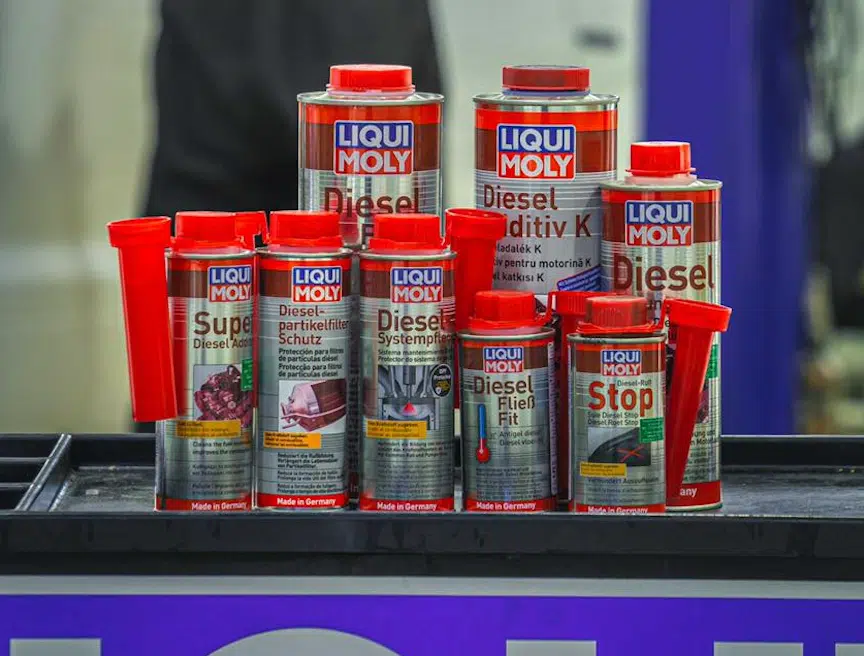
To use LIQUI MOLY diesel antigel additives, simply follow these steps:
Add the recommended quantity to your fuel tank before filling it with diesel fuel.
This will help prevent fuel from gelling in cold temperatures.
Keep your engine running smoothly throughout the winter months.
How to remove water deposits from the fuel system with Liqui Moly Fuel System Cleaner or Commonrail Diesel System Cleaner
Water deposits in your fuel system can severely impact your car’s performance in cold weather. Liqui Moly Fuel System Cleaner and Commonrail Diesel System Cleaner are designed to effectively remove water deposits from your fuel system, improving performance and preventing potential issues in freezing conditions.
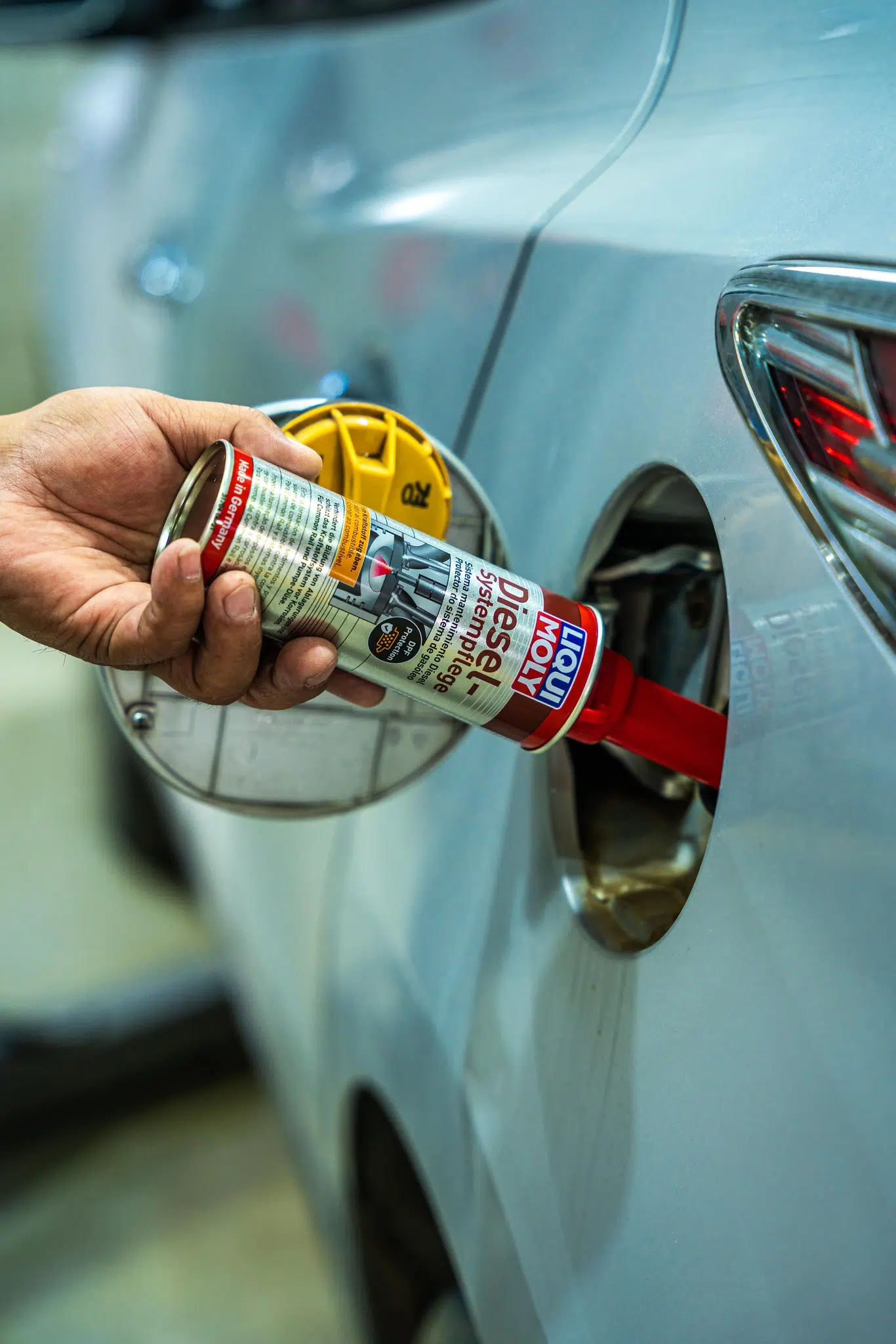
To remove water deposits from your fuel system with Liqui Moly products, follow the instructions on the product label. Regular use of these products can help keep your fuel system clean and efficient, ensuring optimal engine performance in cold weather.
Starter Motor Struggles in the Cold

Aside from battery, engine oil, and fuel system issues, cold weather can also cause problems with your car’s starter motor. A malfunctioning starter motor can leave you with a car that won’t start, even if your battery and other components are in good working order.
Next, we will outline how to detect starter motor issues and share some effective solutions.
Identifying Starter Motor Issues
Recognizing starter motor issues is the first step in addressing them. Some common signs of starter motor problems include a clicking sound when attempting to start the car or dimmed lights when turning the key. These indicators suggest that the starter motor may be struggling to generate enough power to turn over the engine.
Another sign of a potential starter motor issue is if all the lights and in-car electrics are functioning properly, but the car won’t start. In this case, the problem likely lies with the starter motor, rather than the car’s engine or the battery.
Should you suspect a problem with the starter motor, make sure to seek a mechanic’s expertise for a diagnosis and repair.
Solutions for Starter Motor Problems
Fixing starter motor issues can often be as simple as cleaning connections and replacing worn components. Loose, corroded, or broken wires and connections can impede the proper flow of current, causing your starter motor to struggle. Regularly inspecting and cleaning these connections can help prevent starter motor issues and keep your car starting smoothly in cold weather.
If cleaning connections and wires does not resolve the problem, it may be necessary to replace worn or damaged components, such as the starter relay, solenoid, or ignition switch. Consult a mechanic to determine which components need replacing and ensure that your starter motor is functioning properly in cold weather conditions.
Preparing Your Car for Cold Weather
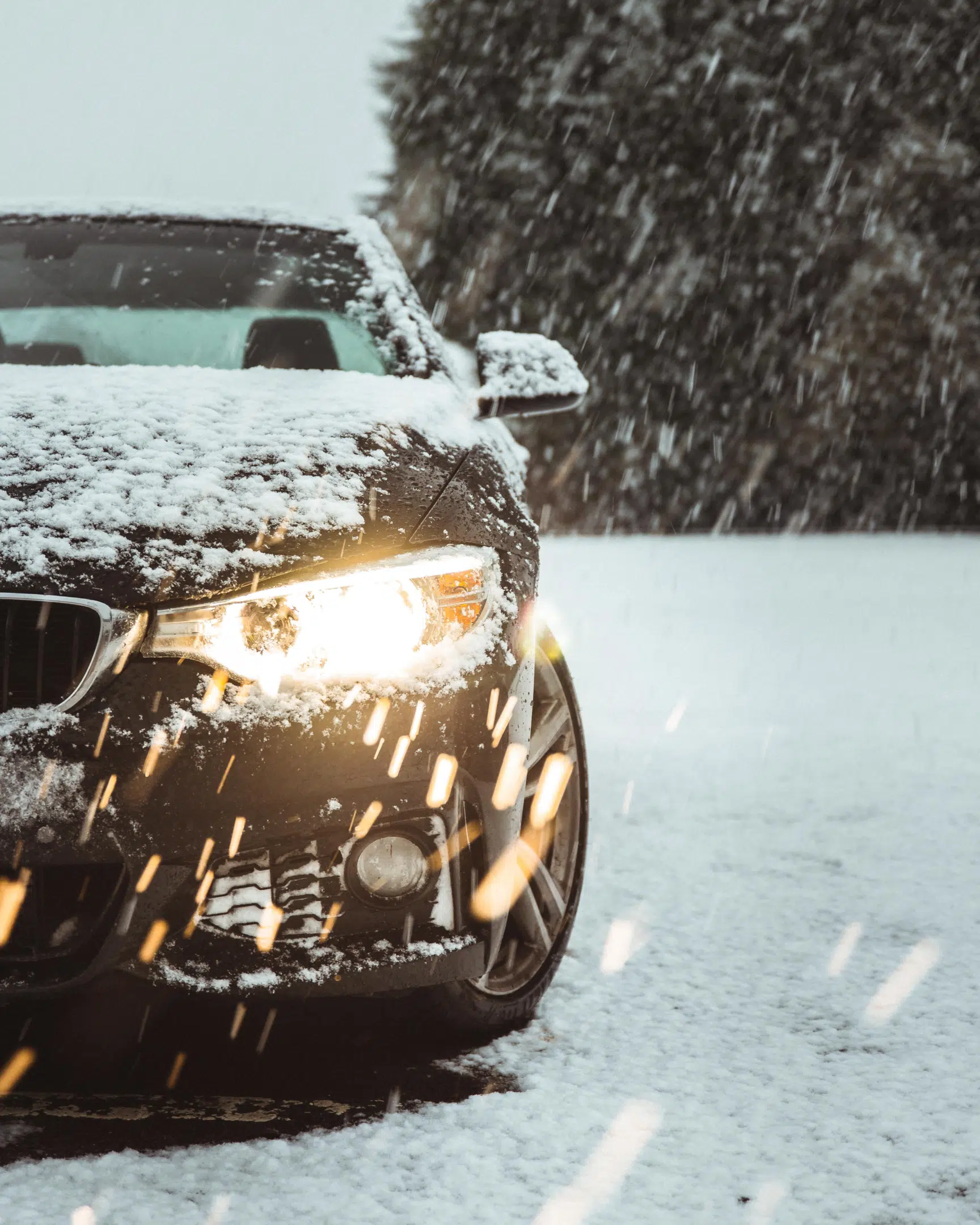
As we’ve seen, cold weather can cause a range of problems for your car, including:
Dead batteries
Frozen fuel lines
Reduced tire pressure
Poor visibility due to frost or ice on windows
Difficulty starting the engine
By properly preparing your car for winter, you can minimize the risk of these issues and keep your vehicle running smoothly throughout the season.
We will next outline key steps to winterize your vehicle and suggest parking and storage methods for protection against harsh weather.
Winterizing Your Vehicle
Preparing your car for winter involves more than just checking your battery and engine oil. It’s important to inspect all fluids, filters, and your heating system, as well as to install winter tires if necessary. Winter tires can help your car navigate icy roads and snowed-in driveways, improving safety and performance during the winter months.
Another essential aspect of winterizing your vehicle is ensuring your car’s coolant has a proper freeze-up point for your area’s climate. Using a hydrometer, you can test your coolant’s freeze-up protection and adjust the ratio of antifreeze to distilled water if needed. Taking these steps will help ensure your car is prepared for the challenges of winter driving.
Parking and Storage Solutions
Protecting your car from the elements is an important part of preparing it for cold weather. Parking your car in a garage or under a covered parking area can help shield it from snow and ice, reducing the impact of cold temperatures on its performance. Parking in a heated garage can be particularly beneficial, as it can help prevent your battery from losing power in cold weather.
In addition to parking and storage solutions, you can also use accessories like block heaters and battery blankets to keep your engine and battery warm during extreme winter conditions. Block heaters are especially useful in maintaining your engine’s coolant temperature overnight, making it easier to start your car in the morning.
Summary
Cold weather can be tough on your car, but with proper preparation and maintenance, you can avoid common issues like dead batteries, frozen fuel lines, and starter motor struggles. By winterizing your vehicle, checking fluids, filters, and battery, and using the right engine oil, you can keep your car running smoothly throughout the frosty months. Don’t let the cold weather get the best of your car – take action now to ensure a trouble-free winter driving experience.
Frequently Asked Questions
What to do if car won’t start in the cold?
If your car won’t start in cold weather, try turning the keys in the ignition and holding them there for up to 10 seconds; if this doesn’t work, wait a minute before repeating.
Additionally, make sure any accessories, such as the heater, radio, and lights, are turned off.
At what temperature do cars not start?
It is advisable to not start your car in temperatures below -20°C (-4°F), as the cold weather can make it difficult for your engine and battery to work properly, and can also damage the rubber seals and gaskets in your car.
Starting your car in cold temperatures can cause a variety of issues, from difficulty starting the engine to damage to the rubber seals and gaskets. It is best to avoid starting your car in temperatures below -20°C (-4°F).
Why won’t my car start but I have power?
It’s likely that your battery is flat, or you have insufficient fuel to get the car going.
You can check the battery voltage with a multimeter, and refill any empty fuel tanks if necessary.
Are cold starts good for cars?
Cold starts can be beneficial as they are quicker and cleaner, but can still cause engine wear due to the condensation in the engine and exhaust system. To minimize the risk of harm, it is important to keep up with regular oil changes and not rev the engine when it is cold.
How can I maintain a healthy car battery in cold weather?
Regularly inspect your battery, clean the terminals, and use a battery charger to keep it fully charged during the cold weather. Doing so will help maintain a healthy car battery in cold weather.
